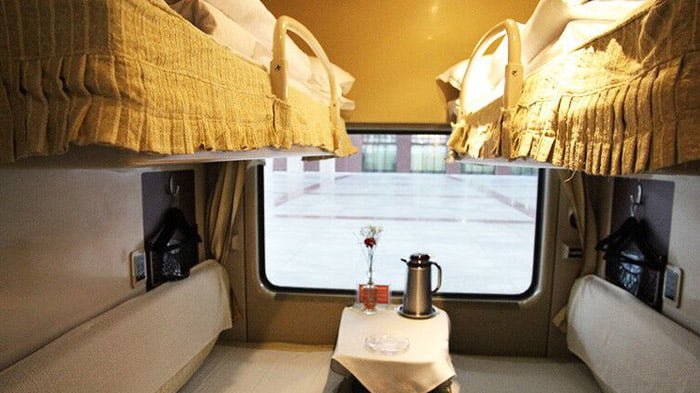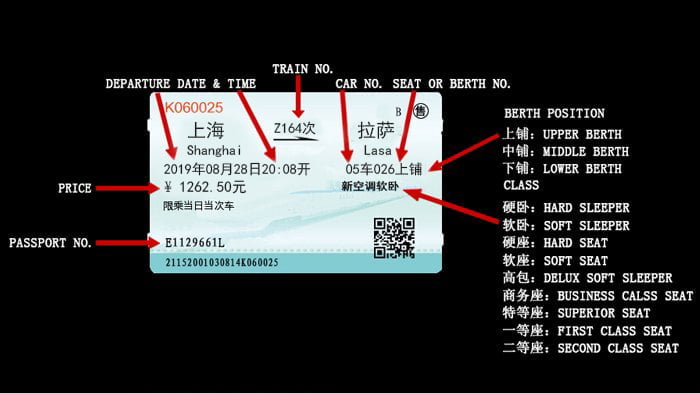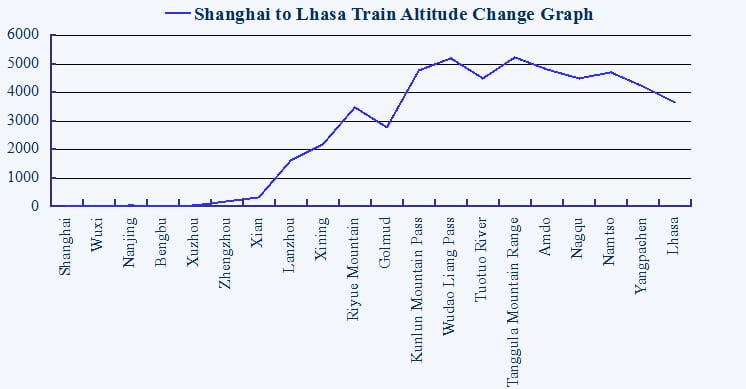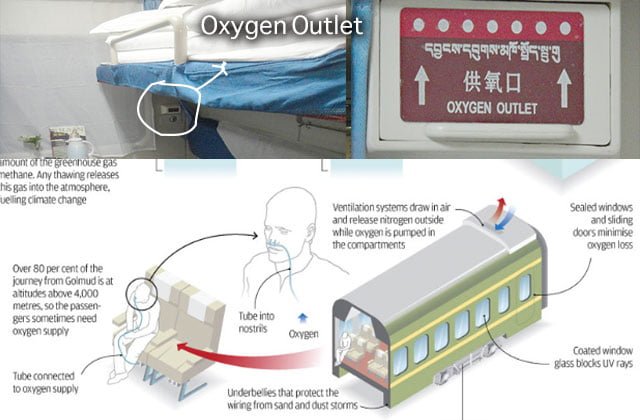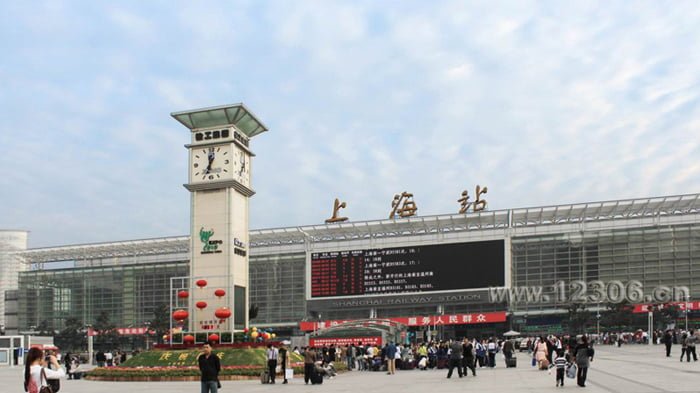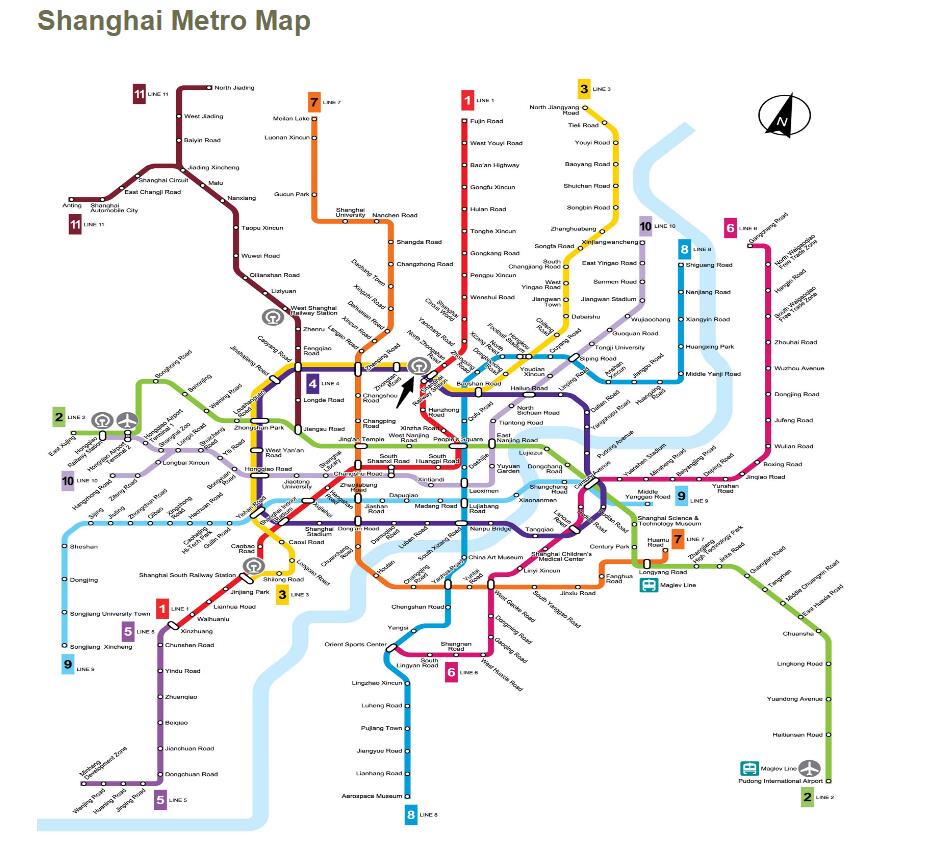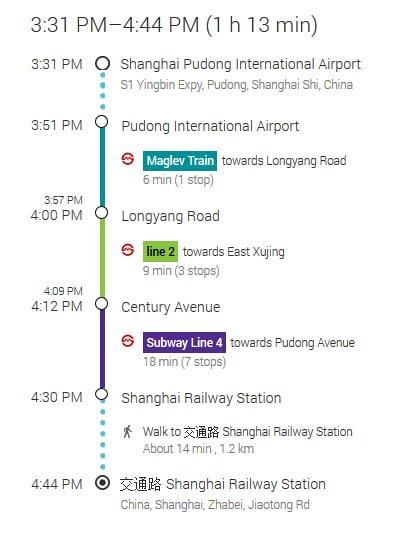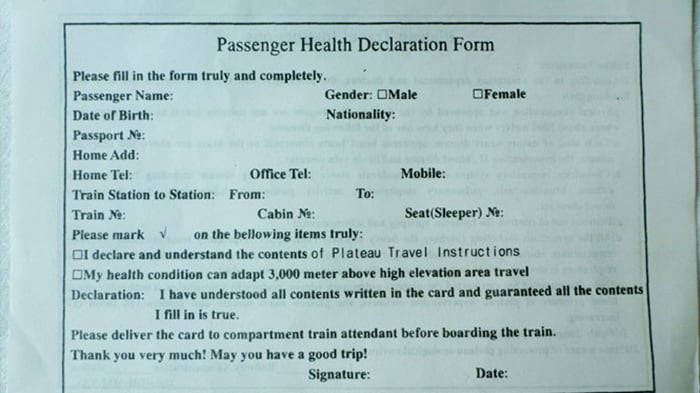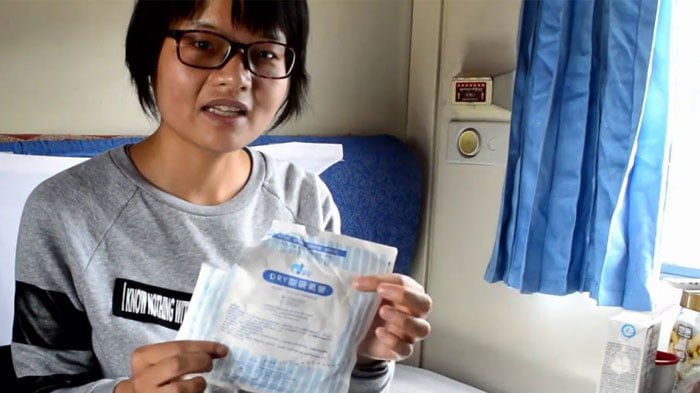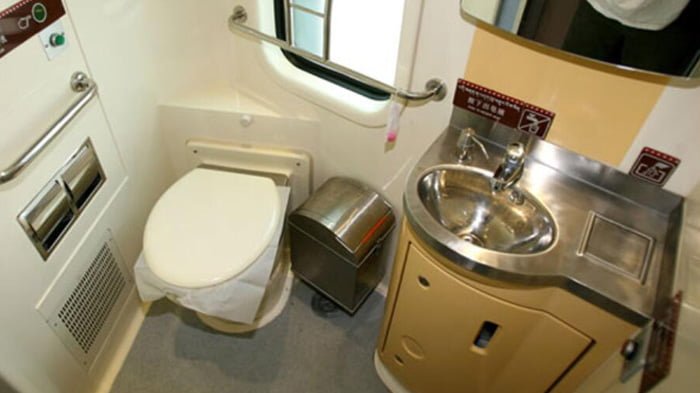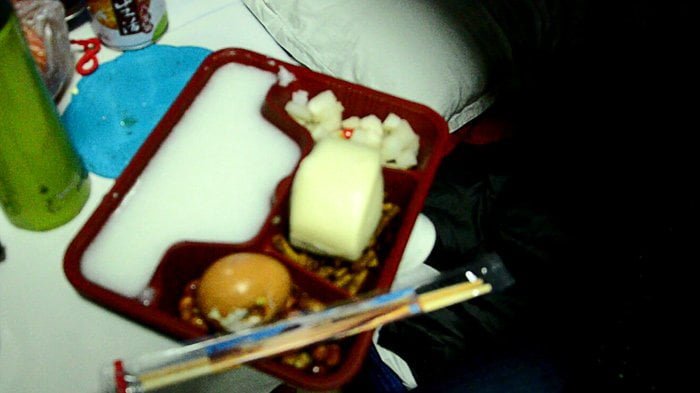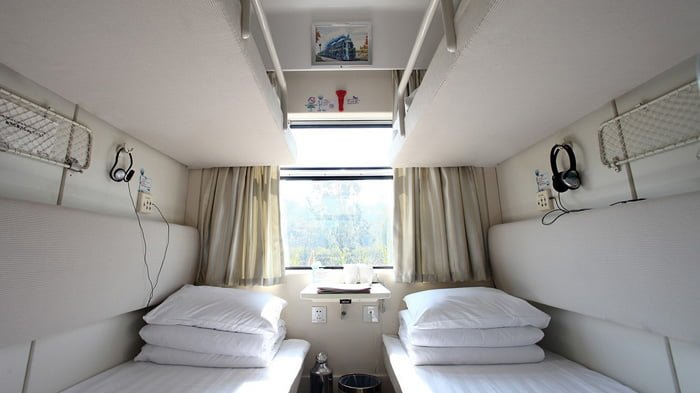Departing every day at 19:35 from Shanghai Railway Station, the Shanghai-Lhasa Train Z164 arrives at Lhasa Railway Station at 19:35 two days later, taking 47:27 hours to ride through the 4,373 kilometers across eight provinces. As the train travels amid mountainous range, conductors of each compartment of the train will use Chinese, Tibetan Language and English to introduce renowned scenic spots along the railway line as well as Tibetan customs and making of Tibetan dishes, etc.
More Detailed Information about Shanghai Tibet Train
Shanghai is an ideal city for international travelers because it has many international flights and cruises connecting the global world. As the most populous urban area and traditionally the most developed international metropolis of China, the city’s multicultural flair endows it with a unique glamour and lifestyle which can be felt deeply by visiting famous attractions such as Shanghai Museum, Yu Garden, Oriental Pearl TV Tower, the Bund, Zhujiajiao Ancient Town, and Nanjing Road.
If you travel to Tibet from Shanghai by train, you will experience an interesting contrast on the culture and lifestyle which may cause you to think deeply about the essence of life.
Which Kind of Ticket Should I Choose?
Solf Sleeper is More Suitable in Shanghai-Tibet Train
First put into use on Oct,1st, 2006, Shanghai-Lhasa train distinguished itself from other trains in an unique way. The train equipped with cutting-edge technology was built to dash on the extreme plateau. The long train, consisting of 15 compartments, could accommodate 863 passengers and 2 of the compartments were used as soft sleepers that could house 64 travelers and another 7 compartments were made for hard sleepers capable of accommodating 407 tourists. Still another 5 compartments were set aside for hard seat that contained 392 passengers, while the rest compartment was reserved for dinning car and crew of Shanghai-Lhasa railway.
The difference between soft and hard sleeper:
There are mainly three categories of accommodations available on Shanghai-Lhasa train, namely soft sleeper, hard sleeper, and hard seat. The Sound sleep matters a lot as to long travel. Given the extreme altitude for second half of the long ride, it is advisable to buy soft sleeper ticket because tourists can have more privacy and enjoy cozier sleeping environment. Hard seat is not recommended as the long ride is a huge challenge to tourists’ stamina and a comfortable accommodation matters a great deal.
There are 4 berths in each soft sleeper compartment
Berth Quantity and Size:
Soft sleeper: 4 berth/ compartment, 75cm*190cm
Hard sleeper: 6 berth/compartment, 60cm*180cm
Compartment Door:
Soft sleeper: sliding lockable door in each compartment to provide more privacy and security
Hard sleeper: no door
Toilets:
Soft sleeper: one Western-style toilet and one squat toilet
Hard sleeper: two squat toilets
What Can I Do if Soft Sleeper Tickets Get Sold Out?
Taking Qinghai-Tibet train is truly popular. It’s extremely difficult for individual travelers to buy train tickets themselves during peak season. If one failed finally, don’t be disappointed.
1. Book a Hard Sleeper Ticket on Shanghai-Tibet Train
Compared with the limited 64 soft sleeper berths, there are 407 hard sleeper berths in 7 carriages of Shanghai-Lhasa train, increasing the chance of getting a ticket.
2. Fly to Xining and Take a Train to Lhasa from Xining
There’s another option,taking plane from Shanghai Pudong International Airport to Xining (The genuine starting point of Qinghai-Tibet railway), then heading to Tibet from Xining by train. There are several daily trains bound for Lhasa from Xining, and the capacity is even greater than Shanghai-Lhasa train. It is much easier to get tickets.
On the other hand, some travelers may feel uncomfortable spending 47 hours on the train. With the majority of scenic view appearing at the last section of railway line, i.e. from Golmud to Lhasa, so it’s a little bit waste of time to take the train all the way from Shanghai to Xining. If you have enough budget, we highly recommend you taking flight from Shanghai to Xining, and then moving to Tibet by train, in this way you can save time and energy.
Attention: Try to Avoid Spring Festival Travel Rush
Though winter is the off-season of Tibet travel, the work load of Shanghai-Lhasa train is never lessened. As the route of Shanghai-Lhasa train stretches across the mainland China and during the spring festival, a sizable number of migrant workers from the economically developed eastern China will take this train to head back to their hometown. Therefore, the spring festival rush makes it virtually impossible to book Shanghai-Lhasa ticket.Even the travel agency can do little about it because the number of tourists going to Tibet shrinks considerably in winter and the railway station won’t reserve many tickets for a travel agency.
How to Book and Get Tibet Train Tickets?
International travelers can’t enter in Tibet as backpackers and need the help of travel agency to apply for Tibet Travel Permit in advance. You do not need the permit to book the tickets but you do need it to collect the ticket and board the train.
1. How to Book Tibet Train Ticket?
Book train ticket with us ( highly recommended)
To foreign tourists, it is highly recommended choosing a reliable and licensed travel agency to book your ticket to Tibet. Not only can the travel agency book your ticket but help foreign tourists apply for and successfully get Tibet Travel Permit together with offering a customized Tibet travel itinerary.
Book at 12306.cn or buy ticket at train station
Neither method is convenient for international travelers. The 12306.cn has no English version and the online payment is limited to Chinese bank card, Wechat Pay and Alipay. The staff in train station can’t speak English. For popular route such as Shanghai to Lhasa train, during the peak season and even the off season of Tibet tourism, it is difficult for foreign tourists to book train tickets.
2. How to Get the Tibet Train Ticket?
In China, you need the paper train tickets to get into your train. If you book train tickets with us, you have two ways to get your paper tickets:
1. We deliver the paper tickets to your hotel or address in China (Recommended)
2. Collect them at the railway station
If you choose the delivery service, it is advisable to inform us 4 business days before departure. If you choose to collect them at the railway station, make sure to bring the confirmation number of train tickets, your Tibet Travel Permit as well as your valid and original passport. The confirmation number will be sent to you along with related train information once the tickets are confirmed, present it and the mentioned documents to the staff behind ticket windows to get paper tickets for free.
Shanghai West Railway Station operates 24/7, but usually there are only a few ticket windows available after 11 p.m. Considering the long queues in front of the ticket window and the language barrier, it is advisable to arrive at the train station at least 2 hours before departure if you collect tickets on the same day.
3. How to Read the Train Ticket
Here are some useful phrases you may need to read Z164 Shanghai to Lhasa Train ticket:
上海站:Shanghai Railway Station
拉萨站: Lhasa Railway Station
xx年xx月xx日: xx Year xx Month xx Date
xx车xx号: xx Carriage xx Berth
上/ 中/ 下铺:Upper/ Middle/ Lower Berth
Information guide on Shanghai to Tibet Train Ticket
How to Board the Train?
Below are the steps to board a train in China:
Step1: Fill in the Health History Form
Before boarding the train, tourists are expected to fill out an health history form. If one has illness such as hypertension, stroke, chronic respiratory problem, and other cardiovascular disease, he or she shall no board the train for one’s health concern.
Step2: Pass Security Check
After your arriving at the right railway station, line up for the security check to enter into waiting hall: present your passport, Tibet Travel Permit and train ticket to the staff, put all your luggage such backpacks, carry-on bags on the security scanner conveyor belt, and walk through a detector gate and wait for staff to use a scanner on you to check forbidden articles.
Notice: Tourists should put your luggage to the X-Ray scanner and things like gun, poison, explosive, and chemical substance, etc are strictly forbidden.
Step3: Find the Waiting Room
Once enter into the waiting hall of Shanghai Railway Station, you can find an LED screen showing Train Number (车次), Terminal (终到站), Departing Time (开点) and Waiting Room (候车室). Get your waiting room information and wait for check-in there. Train number Z164 is well marked in the correct waiting room.
Step4: Board the Train
Usually check-in starts 15-30 minutes before departure and barriers close 5 minutes before departure. After check-in, you can find Led screen hang on the way to the train telling your platform (站台) and direction of your carriage (车厢). Follow the instruction and the staff waiting at the carriage gate will check your ticket again to make sure you board the right carriage of the right train.
Step5: Find Your Berth
After getting on the train, you can find your berth according to your ticket. Put your baggage on the rack overhead or under the lower berth. Your sleeper ticket will be exchanged for a plastic berth card by staff shortly after boarding. Staff will return your ticket and get back the berth card about half an hour before arriving at your destination.
FAQs:
Q1. Is it necessary to carry Tibet Travel Permit all the time?
Make sure you have your passport, Tibet Travel Permit and ticket with you as you could be checked many times during the long journey. It is also advisable to have many copies of Tibet Travel Permit.
Q2. Is it possible to swap ticket with other people to stay with friends or family in the same cabin?
Yes. It is acceptable. You may ask conductor to swap tickets with other passengers to stay with your family or friends. Do remember your cabin and seat No.
Q3. Is It Safe on the Tibet Train?
Having a ride on Qinghai-Tibet train is relatively safe as each compartment is independent and its door will automatically be closed at night. One is forbidden to enter the compartment without ticket. Of course, nowhere is safer than the compartments of soft sleeper. The cabin of soft sleeper can accommodate 4 travellers and there is a door to shut, which is the perfect choice for a family. Besides, the surveillance cameras and 24-hours police patrol make it even safer on the train.
Life Onboard
Having a ride on Qinghai-Tibet train like Shanghai-Lhasa route is definitely the experience of a lifetime. Besides, the long distance and pressurized train tailor-made for acclimatization of extreme altitude make the ride different from other train journey. Following tips are suggested for tourists to better enjoy the life on Shanghai-Lhasa train.
1. Food and Drinks
Before the departure from Shanghai railway station, do bring enough food. It could be snacks, fruit and instant noodles wrapped in bowls. Sharing snack with roommates is the easiest way to break the silence.
Dozens of tourists are having dinner in the dinning car. Tourists can order some traditional Chinese home-made dishes.
You can get 3 meals and drinks from the dining carriage located in the middle of the train. Usually only Chinese food such as noodles, dishes and soups is available and it costs about 20 CNY/meal and accepts cash payment, Wechat payment and Alipay.
The trolleys loaded with food are served in each compartment sporadically and tourists can buy from the staff of train. Besides, tourists can get free boiled water from hot water dispenser near the sinks.
2. Facilities on the Train
Toilets: The soft sleeper carriage has one western-style toilet and one squat style toilet, while hard sleeper carriage only has two squat style toilets. Toilets are located at the end of each carriage, adjacent to the washbasin, dustbin and hot water dispenser. The toilets will be locked when the train stops. Avoid to use them when the train is about to stop for arriving at a station. The red sign on the toilet door means the toilet is occupied while the green sign means not occupied. Next small but important thing is to have enough tissue or toilet paper. Because it is used fast and one won’t find any replacement if it runs out.
Washbasin: Usually only cold water is available. Tourists need to bring their own towel, wet paper tissue and toilet articles.
Dustbin: There is a big dustbin at the end of the carriage. And you can find small dustbin in each compartment and metal plate on the table along the aisle. A cleaner will sweep the floor and collect luggage from the compartment from time to time. All the waste will be disposed by train staff when arrive at stops along the way.
Hot water dispenser: There are free boiled water all the time. Bring your own water flask and get water when the light on the dispenser turns green.
FAQs:
Q1. Where to recharge your mobile phones and electronic devices?
The power plug for chargers are located in the corridors OR under your table in the cabin with the 4 soft sleepers (in between the 2 lower bunks).
Q2. Can tourists have shower in the train?
Unfortunately, there is no shower room in the train. Do bring some wet wipes in stores and a small towel. And small but equally important thing is to bring enough toilet/tissue paper.
3. Altitude Change of Shanghai to Lhasa Train
Shanghai lies at sea level. The subtle altitude change between Shanghai and Lanzhou will not cause any discomfort to you. After Lanzhou, the altitude climbs slowly to 2,275 meters at Xining. Xining is the first station where altitude sickness is likely to occur for a few passengers.
The altitude begins to ascend and reaches 2,829 meters when arriving at Golmud at 04:15. After Golmud, the altitude increases sharply by more than 1,000 meters in less than 100 kilometers, causing altitude sickness for some passengers. When arriving at the world’ s highest railway pass, the Tanggula Pass (5,072m), most tourists will suffer from altitude sickness. Then, the altitude drops slowly as you travel south through Nagqu and finally reaches 3,650 meters in Lhasa.
This graph gives you a rough idea of how altitude changes along Shanghai-Lhasa railway line
4. Altitude Sickness and Oxygen Supply
Sometimes called “mountain sickness”, altitude sickness is a group of symptoms that can strike if you walk or climb to a higher altitude too quickly. Characterized by symptoms such as headache, dizziness, fatigue,nausea, altitude sickness is the biggest concern for travelling to Tibet.
However, there is no need to be panic about altitude sickness. To better adapt to high altitude, Shanghai-Lhasa Train is tightly sealed and pressurized like an airplane. Therefore, smoking is not allowed. There are two sets of oxygen supply on the train: the dispersion-mode oxygen supply system operated by the train staff and the distribution-mode oxygen supply that can be connected to individual passenger through an independent port via a disposable pipe distributed by train staff. You can find the oxygen supply port in your compartment and along the aisle of each carriage.
An illustration of how to use oxygen outlet on Qinghai-Tibet train
As the train ascends to Golmud, the oxygen is automatically pumped into the train and tourists can also manually use the oxygen outlet to minimize altitude sickness symptoms such as headache, dizziness, fatigue,nausea,etc. It is advisable to bring altitude sickness medicines to ease the discomfort.
You can drink lots of water, eat light food and take a good rest to prevent high altitude sickness. It is advisable to consult the doctor for altitude sickness medicines weeks pior to the trip.
FAQs:
Q1. How to Get Help on the Train?
Some of the staff on the train speak English and they are easy-approaching and hospitable to foreign tourists. If one runs into any trouble, you may ask the head of conductor for help. Most of the passengers may have symptoms of altitude sickness (such as headache, fatigue, difficult sleeping, lack of appetite, etc.) as the train reaches Qinghai-Tibet plateau. Now, you may switch on the oxygen outlet to inhale oxygen to ease the discomfort. If the symptom gets worse, you may find the conductor for help and the doctor on the train will come and give you timely treatment.
Q2. How can we minimize the effect of altitude sickness?
The effect of altitude sickness on passengers varies. Yet, to minimize or ease the impact of altitude sickness, one may prepare some altitude sickness tablets before boarding the train and take some when the train climbs to plateau. There is no need to worry too much the altitude sickness, the train is built with oxygen supply system which is easy to use.
Q3. Is smoking allowed in the cabin?
Smoking is strictly forbidden in the train as the train is tightly sealed and pressurized and oxygen is pumped into the carriage when the train ascends to extreme altitude.It would be devastating if the train caught fire.
5. Views along Shanghai-Lhasa Railway
Most of the major attractions along the Shanghai-Lhasa railway route will be seen as the train enters Golmud, for the highlights of Qinghai-Tibet train exist in Xining-Lhasa railway section. You can see attractions such as Yuzhu Peak, Tanggula Pass, Kekexili Natural Reserve and Tsonag Lake along the way. If lucky enough, you can also see wild animal such as Tibetan antelope, wild yak along the way.
Yuzhu Peak is the summit of east part of Mt. Kunlun
The Tanggula is the source of the Ulan Moron and Dangqu Rivers, the geographic headwaters of the Yangtze River.
The Tsonag Lake is seen as the “soul lake” of the Razheng Living Buddha
How to Get to the Train Stations?
Shanghai Railway Station
There are four railway stations in Shanghai City, namely, Shanghai South/ West Railway Station, Shanghai Hongqiao Railway Station, and Shanghai Railway Station. Located in Zhabei District, Shanghai Railway Station is the only station operating the Shanghai-Lhasa Train Z164.
Address: Moling Road, Zhabei District of Shanghai (上海市闸北区秣陵路)
Phone: 021-63179090 95105123
Metro to Shanghai Railway Station: Line 1, Line3, and Line4
Shanghai Railway Station
From Downtown to Shanghai Railway Station:
Shanghai, being the commercial and financial center of mainland China, enjoys an extensive and efficient public transportation system. Besides taking a taxi, tourists can take metro Line 1, Line3, or Line4 to arrive at Shanghai Railway Station easily.
Tourists can arrive at Shanghai Railyway Station by Line 1, Line 3 or 4
From Shanghai Pudong International Airport to Shanghai Railway Station:
Shanghai Pudong International Airport serves as the major hub and gateway for foreign tourists to access China. The mass subway system allows tourists to have an easy travel to virtually anywhere in Shanghai.
Shanghai Pudong International Airport to Shanghai Railway Station
Lhasa Railway Station
Lhasa Railway Station is the terminal of the Qinghai-Tibet Railway and serves as the central hub and biggest train station in Tibet for its huge transport capacity. Situated in Liuwu New Area of southwest Lhasa at an altitude of 3,641 meters, it is only 8 kilometers to downtown Lhasa, 20 kilometers to southwest of the Potala Palace.
When you arrive in Lhasa by train, our guide will greet you and bring you to start your once-in-a-lifetime trip to explore the mysterious Tibet – the roof of the world.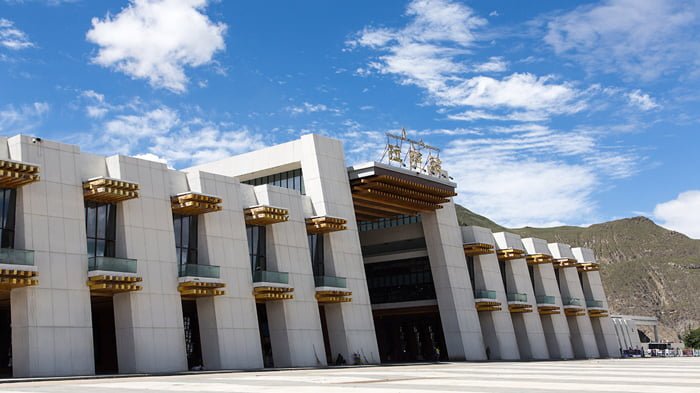
Lhasa Railway Station
If you are planning your trip to Lhasa from Shanghai by train or have any questions about the traveling to Tibet by train, please feel free to contact us for consultation. We are ready to help you out.

